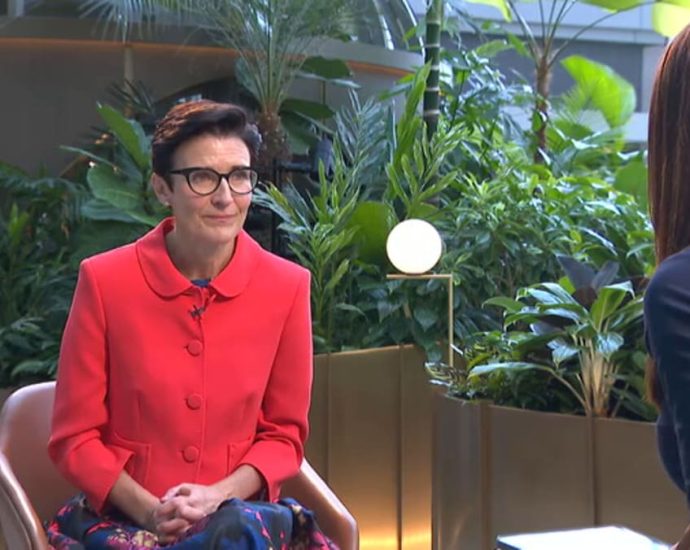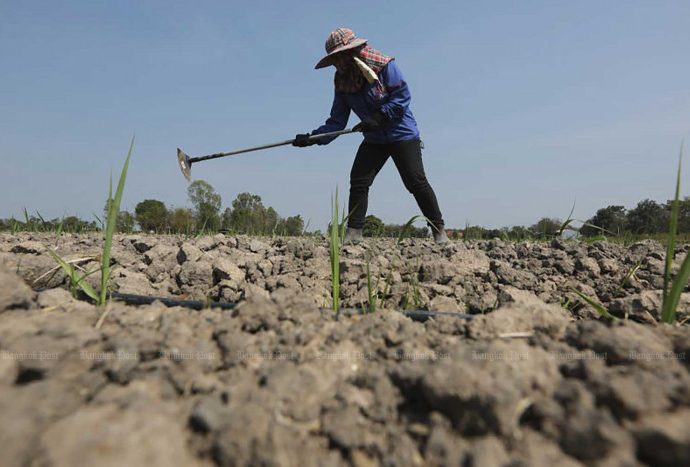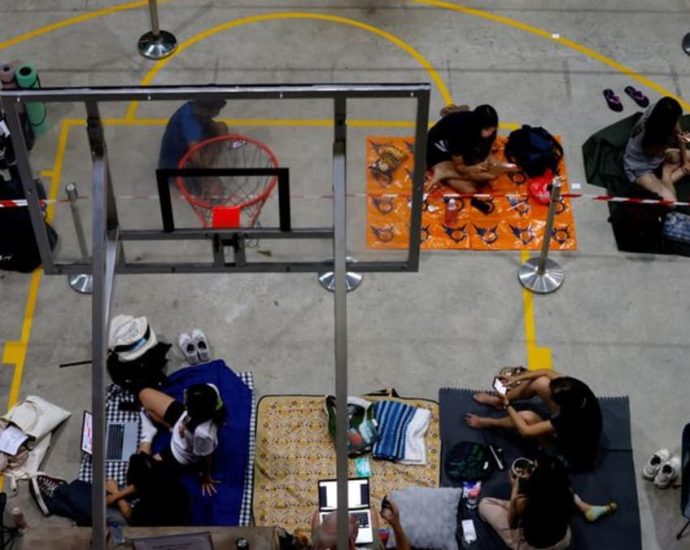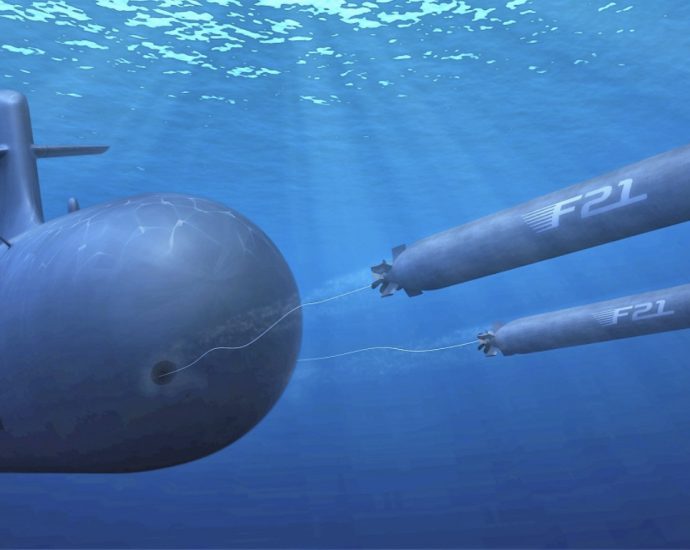US yield surge cause to dump China tech stocks
Anyone who thinks the plunge in Chinese tech stocks has run its course hasn’t been paying attention to Jerome Powell’s utterances in Washington.
There, the Federal Reserve chair is hinting at additional tightening moves as runaway inflation proves hard to defeat. With US bond yields already at 17-year highs, Asia is bracing for any hints from Fed officials about the timing and magnitude of the next interest rate hike, perhaps as soon as November 1.
None more so than investors in mainland China tech stocks, from which foreign funds are tripping over each other to exit. In September alone, US and European funds dumped a net US$1.6 billion of Chinese shares amid $3.5 billion of capital outflows, says data firm EPFR Global.
A disproportionate amount of sell orders are hitting Alibaba Group, JD.com, Tencent Holdings Ltd and other mainland tech juggernauts. That’s despite better news on China’s economic trajectory, increased stimulus efforts and government steps to stabilize a cratering property market.
After six months of decline, China’s gauge of tech equities as at its lowest in more than three years. The Nasdaq Golden Dragon index of mainland American depository receipts is down 20% since early August. The broader CSI 300 index of mainland shares has plunged more than 13% since early August. Even worse, the losses are more likely to continue than stop.
The good news is that President Xi Jinping and Premier Li Qiang are working to reduce financial leverage to reduce the risks of boom-bust cycles. They’re also getting more serious about fixing a troubled property market and giving the private sector more room to breathe after regulatory clampdowns.
In the meantime, though, foreign investors are tripping over themselves to reduce their exposure to China.
Confidence among investors is “likely to stay fragile, while foreign fund outflow could persist near term without meaningful macro improvement, government stimulus step-up and/or additional sustained market liquidity support,” says strategist Laura Wang at Morgan Stanley.
Thomas Gatley, a China analyst at Gavekal Dragonomics, notes that Xi’s economy and markets “face two problems that defy quick solutions.” One, of course, is the ongoing property crisis. The other is high global yields threatening to shoot even higher. As this later challenge collides with the former, Chinese growth stocks – tech in particular – are caught in the middle.

“The upward pressure on US Treasury yields is unlikely to ease anytime soon,” Gatley says. “Tight Fed policy, strict lending standards and elevated inflation all argue there is room for yields to move higher absent a near-term US recession. This is particularly bad news for Chinese tech and other growth stocks.”
The reason, Gatley explains, is that “the most exciting market stories this year have been artificial intelligence and electric vehicles, and Northbound Connect investors loaded up on the policy-favored machinery and electronics sector stocks earlier this year as the artificial intelligence and electric vehicle stories boosted sector sentiment.”
Connect holdings in these sectors, he calculates, “rose by a startling 33%” to 32.6 billion shares from 24.5 billion shares over the course of the first six months. Northbound investors, he reckons, bought 36 billion shares in the battery manufacturer CATL in the first 10 months of 2023, for instance, a 54% increase in their exposure. They also scooped up 8 billion shares in leading electric vehicle manufacturer BYD, a 46% increase.
Gatley notes that outflows from onshore equities in recent months “have primarily been investors paring back holdings in the sectors that benefited from the H1 binge.” He adds that the “selloff in China’s growth stories extended well beyond the onshore market.”
Internet platforms in Hong Kong took blows, too, Gatley says, with Tencent and Alibaba each down 15% through August and September, despite strong earnings growth. And European luxury goods firms, which historically benefitted from affluent Chinese consumption and took a step up on the news of reopening, were also hit hard.
At the same time, China’s property stumble has soured global investors’ demand for the gamut of mainland shares. The ongoing default drama at Country Garden, coming two years after China Evergrande Group reneged on payments, has China Inc in the global headlines for all the wrong reasons.
Until “these problems are resolved, it is tough to see foreign investors adding a lot of China exposure,” Gatley says. “The lack of foreign buying constitutes a material drag on onshore markets, given that Northbound Connect turnover accounts for more than 10% of domestic trading.”
Overcoming the drag on liquidity and sentiment, Gatley concludes, “would likely require a very significant reacceleration of nominal growth which seems hard to manage given the continued drag from property and the uninspiring outlook for external demand in the face of European weakness.”
Then there’s the cumulative effect of the most aggressive Fed tightening since the mid-1990s on the US economy. Fallout from the Hamas-Israel conflict could send global oil prices skyrocketing, resulting in even more aggressive rate hikes.
“Bond vigilantes have reacted to the ‘higher for longer’ narrative and fiscal deficit concerns, while supply cuts and geopolitical tensions in the oil market have put upward pressure on prices,” says Seema Shah, chief global strategist of Principal Asset Management.
As global conditions wobble, says economist Robin Brooks at the Institute of International Finance, “markets are bearish on China and, so far, the bears have been right, with data on domestic demand as well as exports painting a weak picture. We too are concerned given the centrality of the property market for growth.”
Going forward, Brooks says, “there are perhaps some signs that growth is stabilizing. Exports have been weighed down by global consumers shifting back to services, something that will pass as Covid front-loading of goods consumption is worked off.” Looking ahead, he adds, “growth may be stabilizing near-term, though there’s clearly medium-term headwinds.”
Supportive government policies “are therefore critical to ensure sustained growth,” Brooks says.
That’s easier said than done, though, as global headlines intensify from all directions. As it “looks like global risks are emerging” from oil prices to dollar volatility, “we don’t see a market bottom [for Chinese A-shares] this year,” says Zhang Chi, strategist at Sinolink Securities.

Goldman Sachs analyst Maggie Wei notes that a sliding yuan and rising dollar only adds to market stability risks. “The unfavorable interest rate spread between China and the US will likely imply persistent depreciation and outflow pressures in coming months,” she explains.
Adding to the sense of disorientation, US 10-year yields are at their highest level since 2007, just before the subprime loan crisis hit.
“The hurdle for a [bond] rally is still high,” write strategists at Barclays. “Despite data continuing to show a resilient economy, the consensus still expects it to slow very sharply over the coming quarters. Repeated misses beg the question whether the consensus has been overly confident about monetary policy being too tight. We argue that policy is barely tight and risks are skewed towards continued upside surprises.”
And how might the People’s Bank of China respond? One risk worth considering, says strategist Chi Lo at BNP Paribas Asset Management, is that the PBOC “normalizes policy prematurely.” If so, mainland growth “could undershoot” this year’s 5% target at a moment when consumer and private sector confidence are “still feeble.”
Political priorities are their own wildcard, says Diana Choyleva at Enodo Economics. “Xi’s priority continues to be to double down on national security, at the expense of growth if necessary,” Choyleva says. “His rigid adherence to his geopolitical and ideological aims, combined with filling his third-term administration with apparatchiks rather than technocrats, is yet another factor that bodes ill for China’s ability to manage” myriad challenges.
China, Choyleva adds, “has reached the end of the road of its debt-fueled growth model and faces a prolonged period of painful adjustment, which we describe as a slow-motion real economy crisis.”
Choyleva concludes that “tech, real estate and consumer sectors are the hardest hit.” Though “we don’t expect the debt work-out to lead to a financial sector meltdown nor a liquidity crunch. But China has a serious solvency problem and can no longer rely on a strong economic expansion to help it outgrow its bad debt problem. Years of wasteful investment have come to haunt it, resulting in serious demand deflation.’’

That problem is now coming back to undermine stocks. Worries that Xi’s tech crackdown might be entering a new phase hardly help. Recent days generated a number of headlines about an investigation into Foxconn Technology Group, one of the biggest employers in China and a vital Apple Inc partner.
At advertising giant WPP Plc, an executive and two former employees have been detained. Earlier this month, a Beijing court charged an executive at Japanese conglomerate Astellas Pharma Inc with suspected espionage.
It’s a bad look at a moment when Xi and Li are arguing China is open for business after the 2020 crackdown that started with Alibaba founder Jack Ma. So is the exodus out of mainland tech stocks, one that is unlikely to slow until US yields stop rising.
Follow William Pesek on Twitter at @WilliamPesek



















